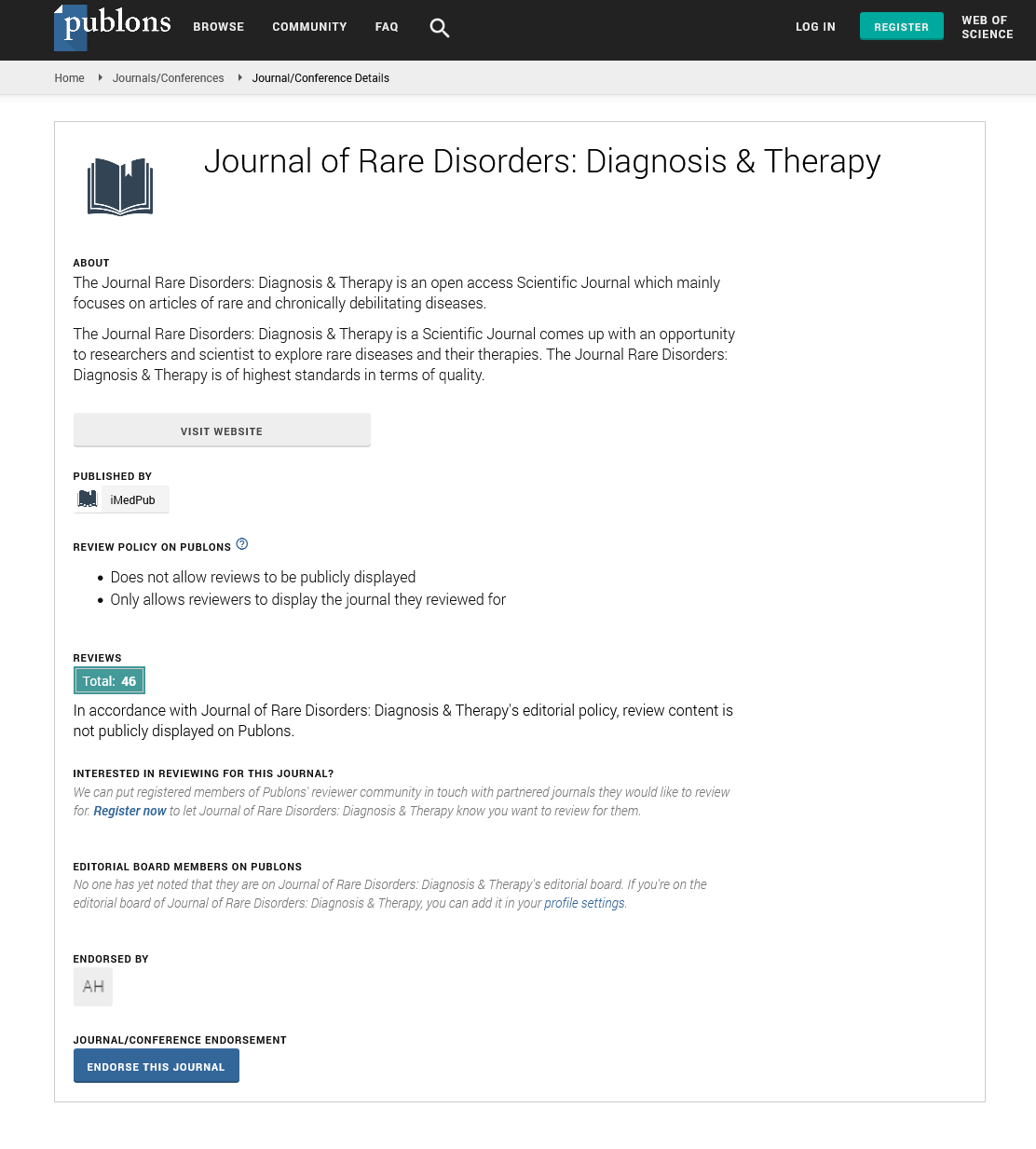Abstract
Changes in Left Ventricle Mechanics in Patients with Anderson - Fabry Disease under Enzyme Replacement Therapy
Background: Sixty percent of patients with Fabry disease (FD) have cardiovascular involvement at the time of diagnosis. Among patients with heart failure of all causes, about 50% show normal or preserved left ventricular systolic function. We reported the evolution and echocardiographic findings of five patients with Fabry disease before undergoing enzyme replacement therapy and after 48 months of follow-up.
Method: Systolic and diastolic functions were assessed in 5 patients with FD using transthoracic echocar- diography. They were matched with echocardiography performed between 36 to 48 months after treatment was started.
Results: At initial evaluation, heart failure symptoms were positive in 3 patients. No history of fainting or cardiac arrhythmia was found on the initial approach. The mean LVEF before ERT was 57.25 ± 3.3. After 48 months of follow-up we observed a significant change increased on the LVEF to 68.7 ± 4.2 (p=0.04). All patients had increased interventricular septum thickness (IVT). The mean relative parietal thickness decreased from 0.63 to 0.59, after 48 months. Patients with mutation c.971T>A were more likely to increase the RPT. If the patient was free of dialysis the RWT tends to decrease. Diastolic function assessment revealed significantly higher E velocities, E wave increase from 73.6 to 81 m sec (p=0.04). But E/A ratio did not change after 48 months of ERT (1 vs. 1.1, p=NS). Two patients had diastolic dysfunction before ERT. After 2 years, four patients have diastolic dysfunction grade II. Before starting enzyme replacement therapy, all strain measures were abnormal. However, it was observed that their measurements did not worsen after ERT was started. The left ventricular twist was assessed, finding a decrease in it with a mean pre-ERT of 10º ± 4 vs. 13.7º ± 2.5 at 48 months (normal value 20 ± 7.3°), this was not significant.
Conclusion: After 2 years of follow-up, we found an improvement in LVEF, a decrease in the ventricular septum. We found no progression in diastolic dysfunction. Even though enzyme replacement therapy in Fabry has proven efficacy, there are very few evaluation and monitoring tools to assess its effects at the cardio- vascular level.
Systolic function is affected only in the late stages of the disease, although the diastolic function is affected earlier, it does not vary greatly over time once ERT has started. We found that conventional parameters, ven- tricular mass and septum diameter are useful as a baseline evaluation.
Author(s):
Gandhy-Thomas Fonseca*, Alberto-Canche Bacab, Roberto-Gayosso J, Rocio-Aceves Millan and Odette- Diaz Avendaño
Abstract | Full-Text | PDF
Share this

Google scholar citation report
Citations : 241
Journal of Rare Disorders: Diagnosis & Therapy received 241 citations as per google scholar report
Journal of Rare Disorders: Diagnosis & Therapy peer review process verified at publons
Abstracted/Indexed in
- Google Scholar
- China National Knowledge Infrastructure (CNKI)
- Directory of Research Journal Indexing (DRJI)
- Publons
- International Committee of Medical Journal Editors (ICMJE)
- Secret Search Engine Labs
- Euro Pub
Open Access Journals
- Aquaculture & Veterinary Science
- Chemistry & Chemical Sciences
- Clinical Sciences
- Engineering
- General Science
- Genetics & Molecular Biology
- Health Care & Nursing
- Immunology & Microbiology
- Materials Science
- Mathematics & Physics
- Medical Sciences
- Neurology & Psychiatry
- Oncology & Cancer Science
- Pharmaceutical Sciences


